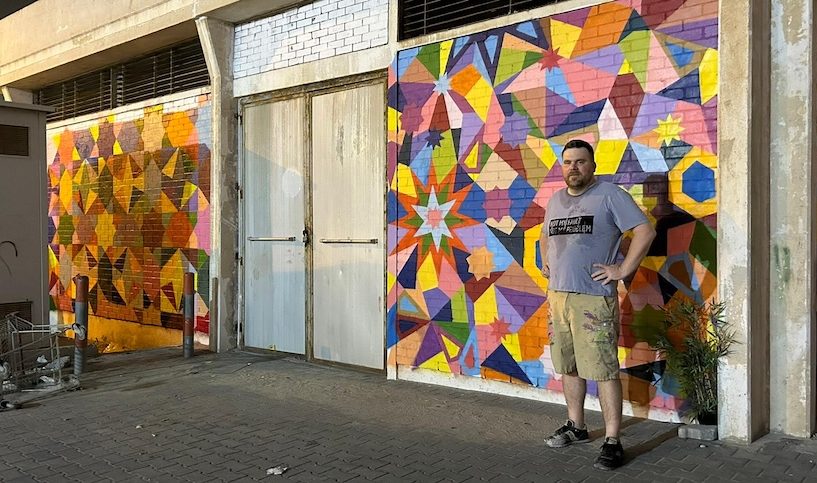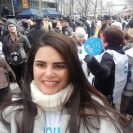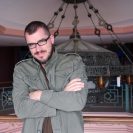When bazaar first heard about the NCCAL’s Al Fenn Al Thalith project it was a revelation, until looking around the streets of Kuwait evidence of this project kept popping up. Beautiful, fresh murals on the electrical substations were appearing. When the appearance of two electrical substations close to our Salmiya office in June changed to intensely bright, colorful designs, we had to investigate further, messaging the artist behind these designs Clark Stoeckley, and project founder Abdullah Saleh Yaseen Ali.
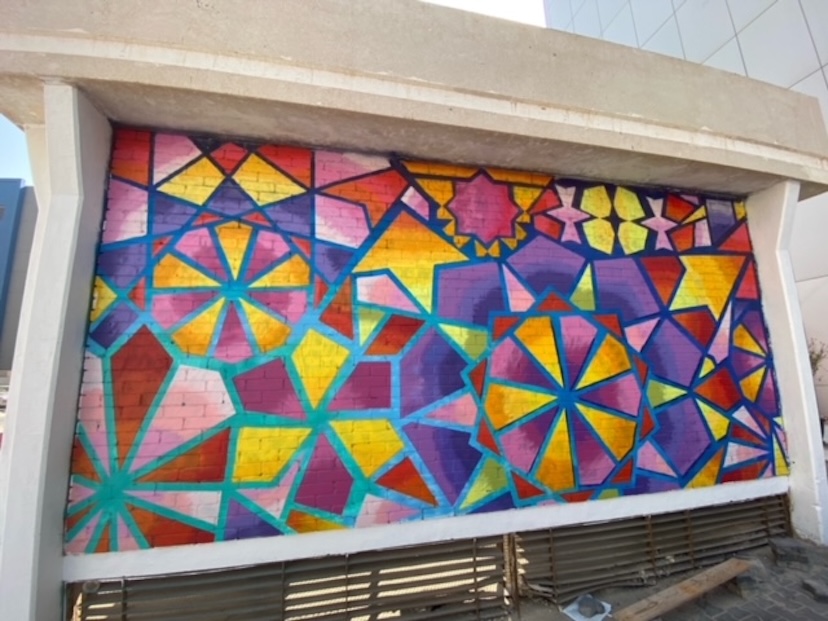
Clark Stoeckley is a multi-disciplinary artist; equally accomplished in media so diverse, as to seem completely unrelated. Clark exhibits ingenious yet accessible ways to communicate to his audience; be those ways through his particular selection of subjects to photograph, perhaps where he decides to place his paintings within the built environment, or simply by being out on the streets in a van with a “click-bait” message stenciled on the sides to draw the viewer in. When personally interacting with his audience, his art is less “performance” – a genre that often arouses accusations of pretentiousness around it – and is more of an experiential installation simply because those who take part in the experience walk away with a clear well-understood message.
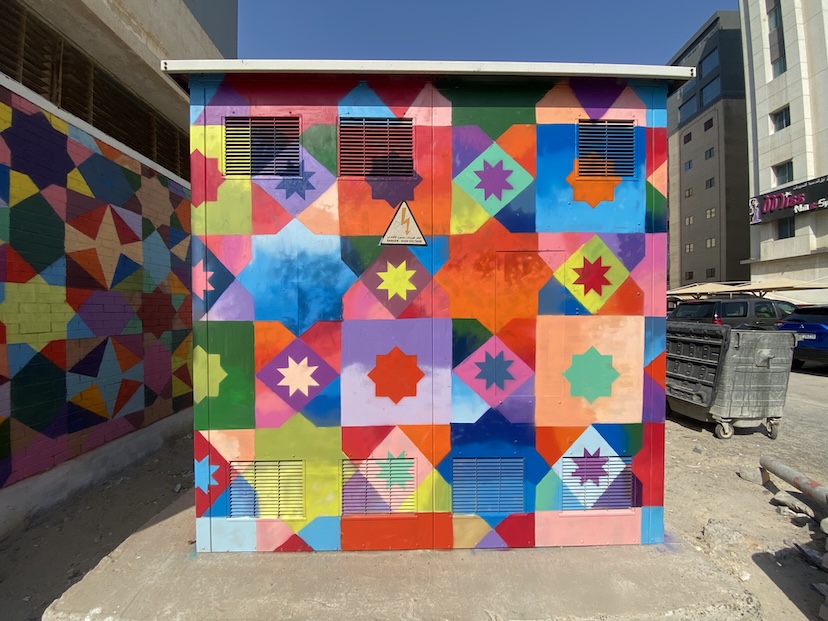
Clark does not shy away from the controversial, nor iconic, in his work. The visual artist states, “I certainly believe that courage is contagious,” when discussing his courtroom sketch artist coverage of Private Chelsea Manning’s 2013 court martial. Clark, who, “…saw Manning as a hero,” eventually curated all his daily sketches chronologically as a graphic novel, appropriate for a hero, and then as a traveling exhibition. “For me, art is not the end product. It is merely a tool for achieving social justice,” Clark writes.

His series – which could be considered a campaign – “LOVE to VOTE” is an homage to Robert Indiana’s pop art piece LOVE, and therefore instantly recognizable; the viewer takes in the sight of it already with a positive foundation from the subconscious typography recognition alone, as well as the feelings we imbue around the word ‘love’. Clark is a brilliant strategist without ego, insightfully knowing that his non-partisan message could be better spread nationwide he inspired hundreds of volunteers to stencil “VOTE” in his place – by proxy if you will. The placement of these pieces is impactful, thought-provoking, and profound.

This cat-crazy bazaarite first discovered Clark’s work through his textile artist wife, Susanna Johns, who encouraged me to flip through his photographs of Kuwait’s feral cats. “Feral Felines” is an ongoing project through which he hopes to, “…encourage people to reconsider their relationship with these elusive creatures who share our spaces yet exist on the periphery of human society.”

Particularly ingenious is “CHESS DRAW” where Clark set up a board and invited people to play chess with him while he sketched them. “My concept was to draw my opponent on both the chessboard and on paper. Taking a pacifist approach to this game of war, I never attacked my opponent. The amount of time spent drawing them depended on their play. Incentivized by a more completed portrait, many adopted my pacifist strategy and drew out the game as long as possible.” A lesson in understanding, and cooperation for mutually beneficial, peaceful, coexistence if ever there was one. One wonders, if Clark were to try something similar here – perhaps a “DAMA DRAW” set up in a mall with qhawah and dates on offer – would the outcome be the same?A geometric and oxymoronically ordered confusion of color is an unmistakable style of Stoeckley’s that you can see in his murals in several locations across the United States including Colorado, Missouri, Minnesota, Nebraska, Nevada – notably at Burning Man, New Jersey, New Mexico, New York, Ohio, and Wisconsin, and also in his ink and colored pencil drawings which can be bought online and at galleries. “Distraught by violence and vitriol on the news and social media, I desired an escape from political arguments and superficial platitudes – particularly those following mass shootings,” writes the artist on his body of work “Thoughts and Prayers” adding how “[It] represents many things combined and nothing at all. I visualize music, mutations of a spreading virus, or the jolting culture shock of being at Burning Man one week and Kuwait the next.” It seems like the electrical substations are more than fitting as Clark’s canvas. He also describes his abstract works thus, “These synesthesia-stimulated drawings depict the kaleidoscopic phantasmagoria of my semi-lucid subconscious and divine introspective explorations. Or, simply put, they originate from doodles I make when I’m in a meeting.” Clark obviously has a sense of humor, too. He continues, “JACC and Kuwait towers definitely influenced my [electrical substation] design choices. But so do all of the Islamic designs I encounter.” Clark lists psychedelic art, street art, modern art, fabric markets, stained glass, and more as inspo. However, he also shares a studio with his wife Susanna, and her textile artwork – quilting for example, can be seen as influential on Clark’s pieces. “I started this abstract work about the same time that I married Susanna who is a quilter and fiber artist. We share a studio together and mutually inspire each other’s design ideas.” Don’t let the wholesome inspiration and the clean execution fool you, social messaging is integral to Stoeckley’s work.
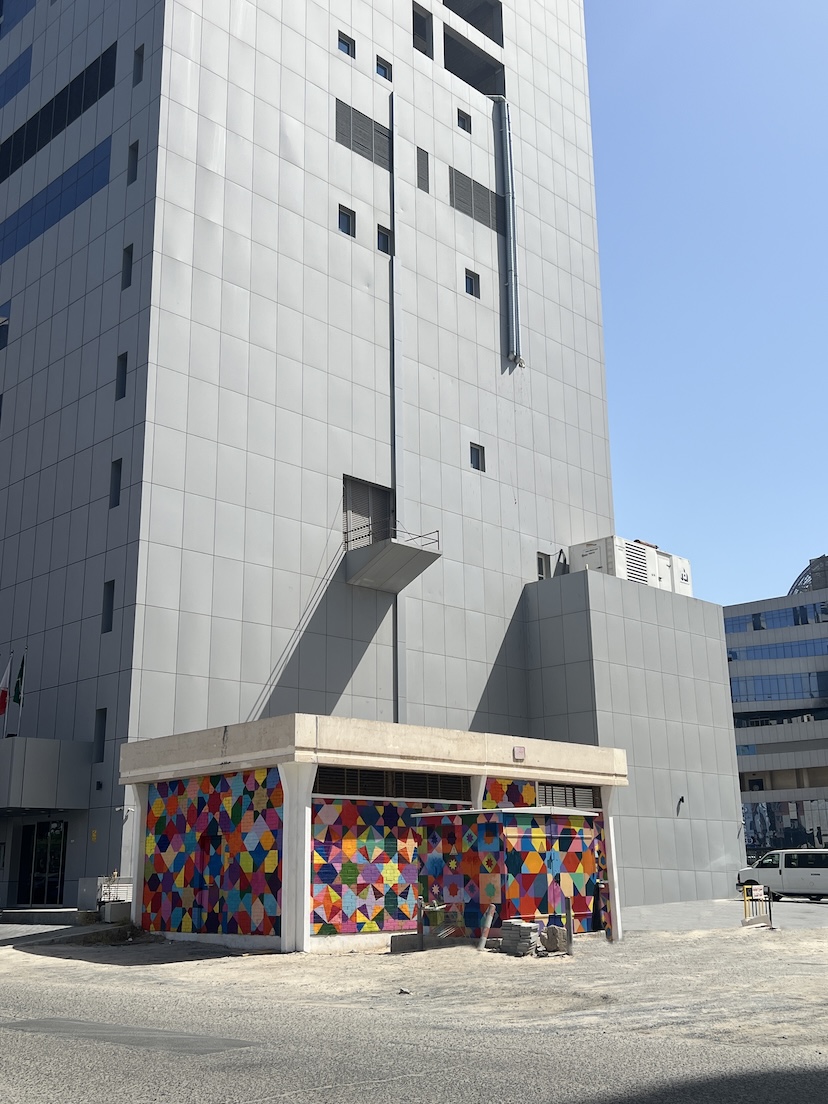
When he discovered the open call for design submissions for the National Council for Culture Arts and Letters (NCCAL) Public Art Project “Al Fenn Al Thalit” Clark knew he wanted to submit his designs. “I have been painting murals for 20 years, so I figured this was my chance to start painting in Kuwait.” The Salmiya locations are accessible to Stoeckley because the AUK professor lives and works in Salmiya, and seeing celebrated public art that successfully navigated national bureaucracy to arrive on familiar street walls is inspirational. Although Clark states simply, “I want my students and colleagues to enjoy the murals when they come to campus.”
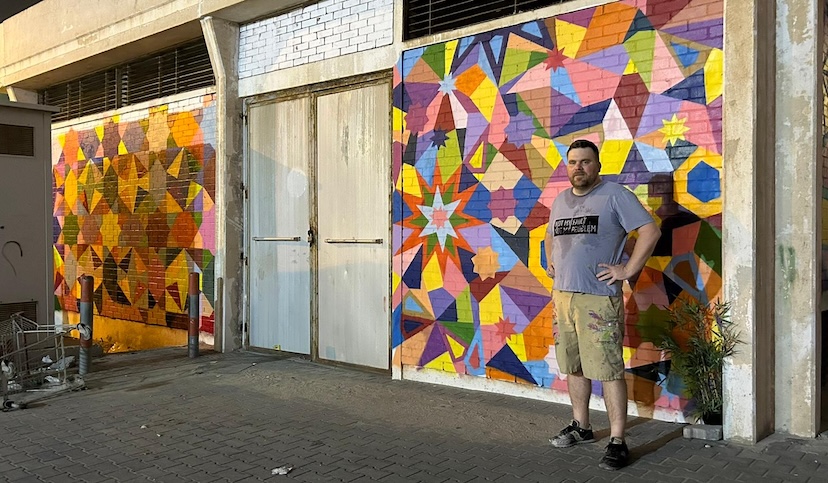
The NCCAL project is managed and expertly curated by Abdullah Saleh Yaseen Ali. “Al Fenn Al Thalith” aims to make the process easier for implementing and installing public art, with the NCCAL as a guide for artists as they navigate the entire process. Abdullah mentions, “I remember a few coworkers (one of whom is my current supervisor on this project) calling me up during the pandemic lockdowns discussing…unifying public art in Kuwait under one governing and organizing umbrella”. Now they are.
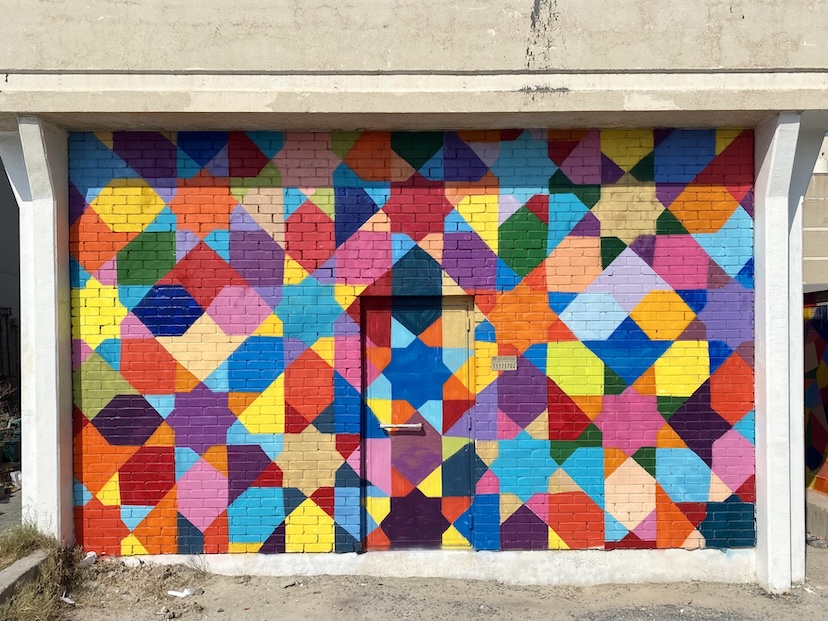
As an artist himself Abdullah was already part of the growing alternative art scene in Kuwait during the late 2010’s. There was a surge in the popularity of murals and graffiti art then, with artists like Sfhir being independently flown from Spain to apply his talent to a business’ community space, and local artists like Monstariam and GraffitiFreak making names for themselves commercially. However, Abdullah had already noticed how, “…the public sector in Kuwait never truly catered to not only street artists and muralists, but any contemporary form of art that didn’t follow the “traditional” norms in style, sensibility, and approach.” Going on to note that, “If you wanted to create a mural on a public wall, such as…electrical substations…which are…screaming out to be a canvas, the [number] of hoops and hurdles you have to go through, with no defined system or rules…there was absolutely no structure to the whole thing. On top of that, you…have [expat] artists like Clark Stoeckley, who…would have no way of knowing where and to whom to reach out,” making the NCCAL project immediately impactful. Abdullah continues to explain, “[We needed] to show the artists that the opportunities exist, the public sector is changing and cares, and to show them we are trying to foster community and cultivate a booming art scene.”
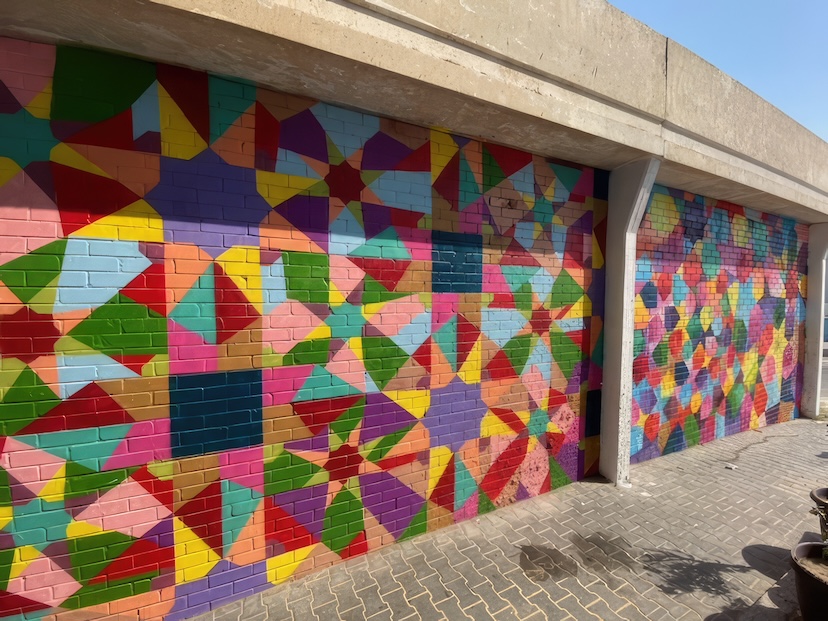
With electrical substations across Kuwait in myriad locations within different urban typologies, it’s credit-worthy that Abdullah recognized that not any piece of art can go just anywhere. Colors, subjects, and topics are considered carefully when deciding which art pieces are installed in which particular areas. Says Abdullah, “We have a team currently composed of designers, architects, and artists to follow an approach I took in curating our first few successful murals where we study and analyze areas all over Kuwait, from the micro to the macro, creating a sort of ‘zoning ordinance’ in how to approach implementing public art pieces.”
It’s all well and good getting creatives on board, the community always finds and supports itself, somehow, eventually. But, getting NCCAL and other ministries on board, how does that work? Abdullah answers, “In terms of internally within the NCCAL…it’s all thanks to the trust I got from my leadership and supervision that took notice of all my work and passion (shout out to Abdulaziz Al Mazeedi). We struggled and it took a few years of convincing and putting myself in front of the right people to take notice, with a few strokes of luck, but finally, things got off the ground earlier this year.”
Apply for Al Fenn Al Thalith at nccal.gov.kw and follow progress through @kw_nccal and @theabood on Instagram where you can discover Abdullah’s art on @inkuarium. Clark Stoeckley is an Associate Professor of Art & Graphic Design at the American University of Kuwait, Salmiya. For more on Clark’s work go to clarkstoeckley.com, follow him on Instagram @clark_stoekley and @feral_feline_photography. Find Clark’s work on souqbawa.com. Read The United States vs. Private Chelsea Manning: A Graphic Account Inside the Courtroom. Follow @susanna_makes on Instagram.



